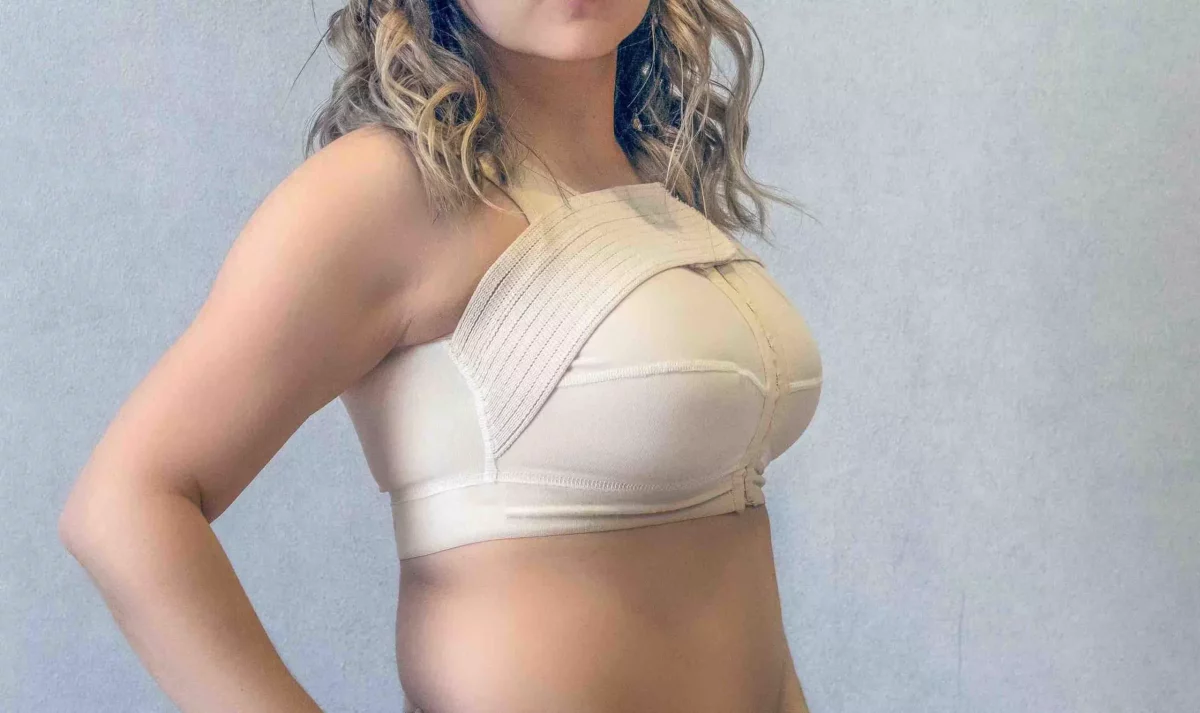Going through breast reconstruction can be an emotional and physical roller coaster. There is much to know — from reconstructive surgical procedures and recovery to what you should expect after you heal.
And that’s before you consider all your questions or concerns about your health or finances. This article contains everything you need to know about breast reconstruction recovery.
Keep reading!
Breast Reconstruction Time Frame
Most breast reconstruction surgeries are performed using an implant. This means the recovery process is generally shorter and less involved than if you had undergone a flap surgery (which transplants tissue from your abdomen, back, or other body area). However, giving your body time to heal after surgery is still important (regardless of the type of reconstruction you underwent).
Here is a general timeline of what you can expect during your breast reconstruction recovery:
1-2 Weeks
You will likely feel tired and sore for the first week after surgery. You may also have swelling, bruising, and drainage from your surgical incisions. Your surgeon will give you specific instructions on caring for your incisions, including wearing compression garments and drains.
2-4 Weeks
Most patients feel well enough to return to work and other normal activities by two weeks post-op. However, you should still avoid strenuous exercise and heavy lifting. Your surgeon will continue monitoring your progress and may ask you to visit for follow-up appointments.
4-6 Weeks
Most patients have fully recovered from their breast reconstruction surgery by this point. You can usually resume all normal activities, including exercise. Your incisions should be healed, and any residual swelling should have gone down.
What to Expect Over the First 12 Months After Surgery
Breast reconstruction recovery time for most women is around 3 to 6 months.
As the months go by, you will continue to see improvements in your appearance. And the final results of your surgery may be visible 6 to 12 months after. However, most women are very happy with their breast reconstruction surgery results and feel it was worth the effort.
But it is important to follow your surgeon’s instructions and attend all follow-up appointments.
Best Practices in Recovery
After breast reconstruction surgery, it is important to follow best recovery practices to heal properly. Depending on your surgery, your recovery may vary, but some general tips can help make the process go more smoothly.
- First and foremost, be sure to follow your surgeon’s instructions. They know your body and what it needs better than anyone else. That being said, you can do some general things to ease your recovery.
- Get plenty of rest and sleep. Your body needs time to heal, so give it the chance to do so by getting plenty of rest. Avoid strenuous activity or exercise for at least a few weeks after surgery.
- Eat healthy foods and drink plenty of fluids. A healthy diet will help your body to heal more quickly. Make sure to drink plenty of water and avoid alcohol while recovering.
- Apply any prescribed ointments or creams as directed by your surgeon. These can help to reduce swelling and pain at the surgical site.
- Elevate your chest to help reduce swelling. It can be done by propping yourself up with pillows when lying down.
FAQs
What Is Breast Reconstruction?
Breast reconstruction is a type of surgery performed to restore the shape and appearance of the breast after a mastectomy. Breast reconstruction can be performed using either artificial implants or natural tissue.
The type of reconstruction that is right for your surgeon will determine you. It will be based on several factors, including your age, health, and preferences. Recovery from breast reconstruction surgery can take several weeks to months. And it is important to follow your surgeon’s instructions.
What Causes Pain During Breast Reconstruction?
The tissue that holds the implant in is usually delicate and soft. But some women develop a tissue pocket that is irregularly hard or dense, pressing the implant. This is what is called capsular contracture. This complication requires a secondary breast surgery to correct.
How Long Following Breast Surgery Should a Drain Be Left In?
Most breast reconstruction individuals will have surgical drains in place for 10 to 14 days. It’s uncommon for drains to stay in place any longer than two weeks because doing so can offer a substantial infection risk.
Do Reconstructed Breasts Experience Sensations?
Your breast feeling changes. Most women experience diminished sensations in the reconstructed breast. However, this does not necessarily mean you will not have any. Every woman and breast reconstruction case is different.








